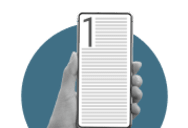Are you applying skincare too roughly? It might lead to sagging, ageing skin
Here’s why a gentle touch is crucial, no matter if you prefer patting in or rubbing in your lotions and creams.
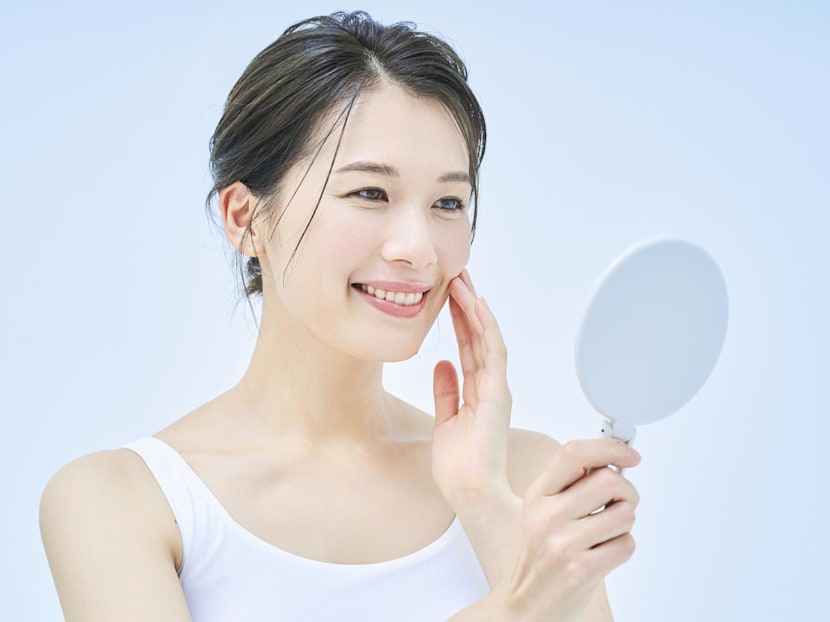
Can you overstretch your skin when applying skincare? (Photo: iStock)

This audio is generated by an AI tool.
Like showering or brushing our teeth, putting on skincare products is one of those repetitive everyday tasks in our skincare routine that we tend not to give much thought to.
Most people pay more attention to the products they are using rather than how they are applying them. However, using the wrong techniques can potentially undo the benefits of your skincare products by causing skin damage or accelerated ageing.
Take heed, if you’re used to slapping on your toner or rubbing moisturiser vigorously onto your skin – these actions can have adverse effects on your mien, according to Dr Stephanie Ho, consultant dermatologist at Stephanie Ho Dermatology.
Repetitive and harsh manipulation of facial skin when applying skincare products can damage collagen and elastin fibres, impair fibroblast function, and accelerate visible ageing.
“Repetitive and harsh manipulation of facial skin when applying skincare products can damage collagen and elastin fibres, impair fibroblast function, and accelerate visible ageing, resulting in symptoms such as sagging skin and wrinkles,” she said, adding that such signs are likely to appear in areas where skin is particularly delicate, like around the eyes.
You might not notice this in the short term, as the effects of mechanical stress on skin will show up gradually, noted Dr Shirley Kwee, medical director of Cambridge Medical Group.
“While occasional rubbing is unlikely to cause visible harm, consistently applying skincare with too much force or using improper techniques can accumulate damage over the years. That’s why it’s important to apply products gently, using light pressure and a mindful touch, particularly around sensitive zones like the eyes,” she explained.
HOW MECHANICAL STRESS IMPACTS SKIN
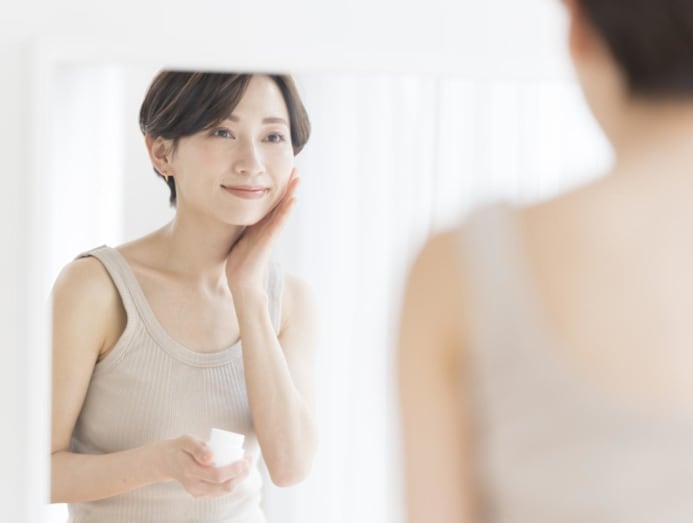
Of course, there are many other factors, besides mechanical stress, that can cause skin to sag and wrinkle – ageing being a major contributor, according to Dr Kwee. “As we age, the production of collagen, elastin and hyaluronic acid – all crucial for skin firmness and hydration – declines. Additionally, we experience loss of facial fat, bone resorption and weakening of the underlying supportive structures, which together contribute to a hollowed and sagging appearance,” she said.
“External factors such as UV exposure, pollution, smoking and even stress can accelerate the breakdown of collagen and elastin, exacerbating sagging. So, while ageing sets the stage, lifestyle and environmental factors – including your skincare habits – determine how quickly and dramatically sagging occurs,” she added.
Aggressive application techniques can cause micro-tears in the skin barrier.
Being rough with your skin can lead to more serious skin issues besides accelerating signs of ageing. “Excessive rubbing and motions that create friction on skin can cause skin irritation, leading to redness and discomfort. Prolonged or vigorous rubbing can also trigger an inflammatory response in the skin,” said Dr Ho. An inflammatory response can result in redness, swelling and pain in more severe cases.
Dr Kwee also noted that aggressive application techniques can cause micro-tears in the skin barrier, especially in individuals with sensitive or compromised skin. In some cases, it can also trigger conditions like contact dermatitis or exacerbate existing skin concerns such as rosacea or eczema.
APPLYING SKINCARE PRODUCTS THE RIGHT WAY
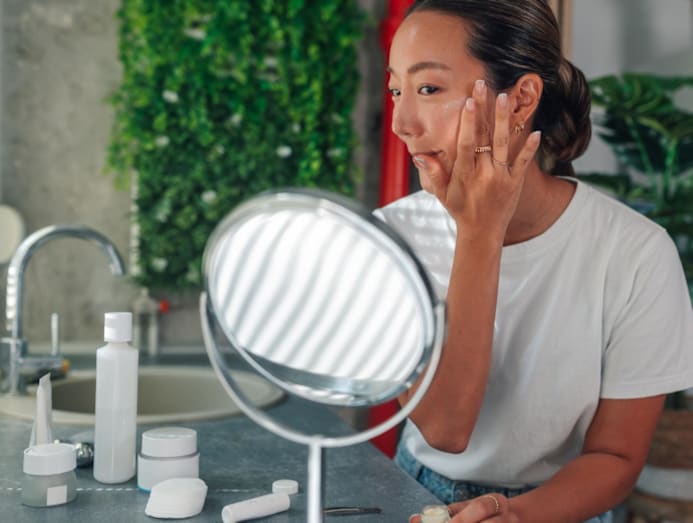
The key to protecting your skin while going about your skincare routine is to be gentle with your motions. “Use light, upward and outward strokes – doing so helps counteract gravity and support skin firmness. Apply products starting from the centre of your face and move outwards – this encourages lymphatic drainage and reduces puffiness. Focus on applying products with a soft touch that feels comfortable and supportive to the skin,” advised Dr Ho.
“The under-eye area, being thinner and more delicate, should be treated with extra care – using your ring finger can help ensure lighter pressure. Layering products in the correct order, from thinnest to thickest consistency, also ensures optimal absorption and efficacy,” said Dr Kwee.
Use light, upward and outward strokes – doing so helps counteract gravity and support skin firmness.
You can also try lightly patting or pressing products into the skin. Dr Kwee agreed that this method is generally gentler and can reduce unnecessary friction, especially on sensitive skin. “It also allows the product to sit and absorb without disrupting the skin barrier or causing micro-irritations. While the difference in absorption may not be drastic for all products, especially those with high penetrability, it certainly helps improve tolerance and reduce the risk of over-manipulating the skin,” she added.
Sweeping or circular motions are perfectly fine as well, provided they’re done gently and with care. “Think of it as guiding the product rather than massaging it in forcefully. Use light to moderate pressure, just enough to move the product across the skin without pulling or dragging. A common mistake is using too much pressure under the belief that ‘more is better’,” said Dr Kwee.
USING FACIAL TOOLS AND DEVICES
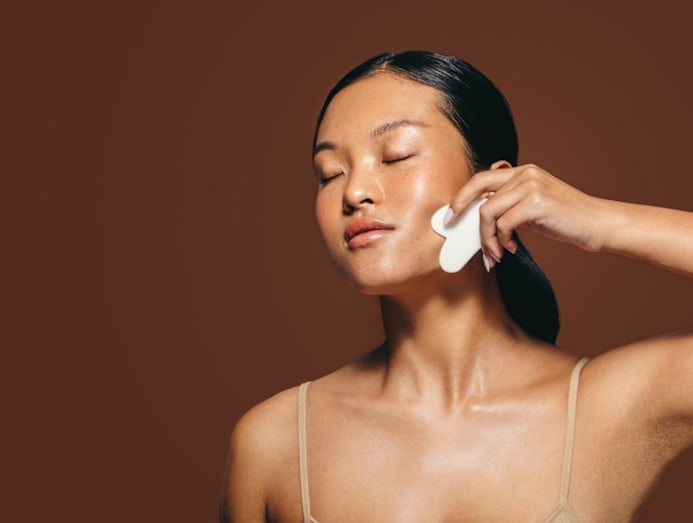
With the growing popularity of facial massage tools and devices, a lot of us are also using them to enhance the effects and application of our skincare products. But does using facial rollers, guasha or acupressure tools and electronic facial devices offer a better way of putting skincare products onto skin or can they also inflict mechanical stress on it?
“Such facial tools can benefit the skin by boosting blood circulation, promoting lymphatic drainage and reducing puffiness. and potentially enhance product absorption. Some studies suggest regular facial massage (which some of these tools facilitate) may contribute to firmer skin and reduce wrinkles over time. They may have a temporary toning and lifting effect on skin, but there’s no scientific evidence they can ‘slim’ the face or have permanent lifting effects on sagging skin,” said Dr Ho.
While such facial tools can offer certain skincare benefits, they may not, however, be gentler on skin. “Over-manipulation, applying excessive pressure, or using them on unsuitable skin types (such as skin with active acne, open wounds, or highly sensitive skin) can lead to irritation, inflammation, or even damage to collagen and elastin fibres,” she added.
There’s no harm using them, as long as you are using them in the correct way, and your skin is healthy. Always follow the manufacturer's instructions for the specific device and don’t use them for excessively long periods of time.
Another important point to note is to always ensure proper lubrication. Put on the appropriate skincare product (and a sufficient amount of it) when applying the tool, so you won’t be creating friction and mechanical stress by pulling and tugging on your skin excessively.


